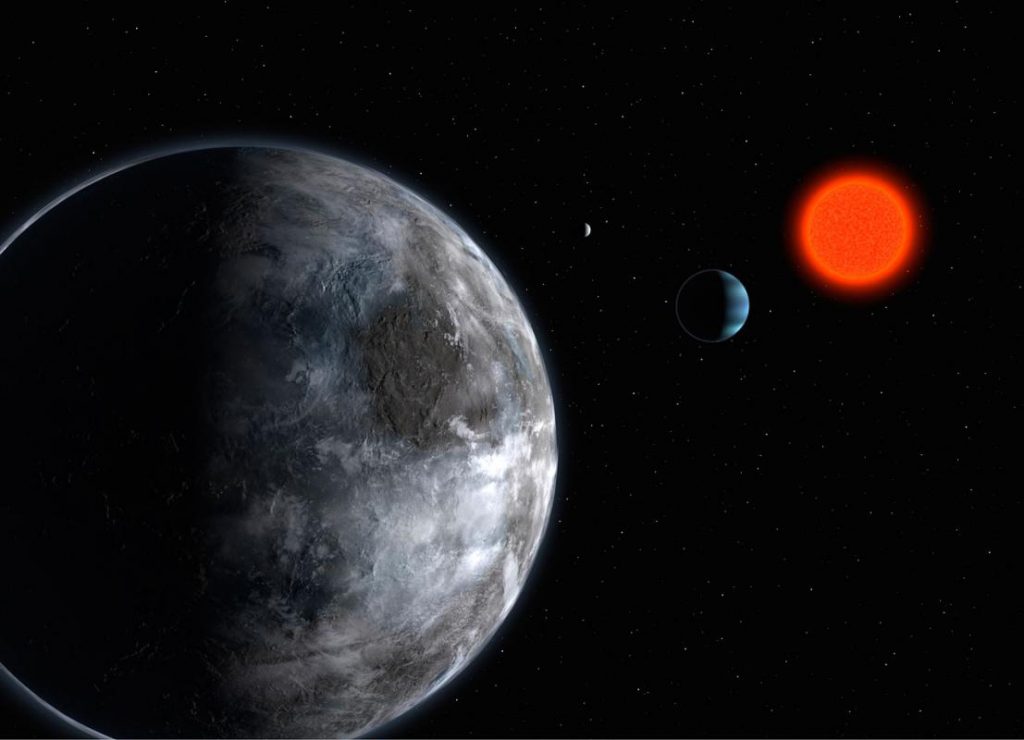How do stars and planets come to life? How do magnetic fields impact their birth? Is our Earth one of the few planets in the Milky Way capable of hosting liquid water on its surface, or is it just one in a multitude? These are a few of the major questions that puzzle today’s astronomers and that SPIRou, the next-generation instrument for CFHT, proposes to investigate in a novel, innovative way over the coming decade.
In addition to being a spectropolarimeter – decomposing the light from stars into its elementary colors and vibration modes, SPIRou is a high-precision velocimeter, capable of recording the tiny motions of a star that probe the presence of an orbiting planet – like a radar speed gun that would flash, not for an excess velocity of the observed star, but for regular and periodic variations of its velocity. SPIRou will thus be able to hunt Earth-like planets orbiting in the habitable zones of nearby red-dwarf stars. The atmospheres of these Earth twins will then be scrutinized for the potential presence of water and other life-related molecules with future facilities such as the James Webb Space Telescope to be launched in 2018. SPIRou will also be ideal to unveil mysteries in the formation of stars and planets, by observing for the first time ever magnetic fields at the heart of newly-born Solar-System-like worlds of only a few hundred thousand years. SPIRou will also be able to tackle many more science programs, from weather patterns on brown dwarf to solar-system planet atmospheres,to dynamo processes in fully-convective bodies and planet habitability.
A description of most science programs that SPIRou will be able to carry out (mainly for scientists) is available in the following document :
To efficiently observe celestial bodies as cool as red-dwarf stars – whose surface temperature barely matches that of standard halogen bulbs – SPIRou must work in the infrared, that is at longer wavelengths than those of visible light.

